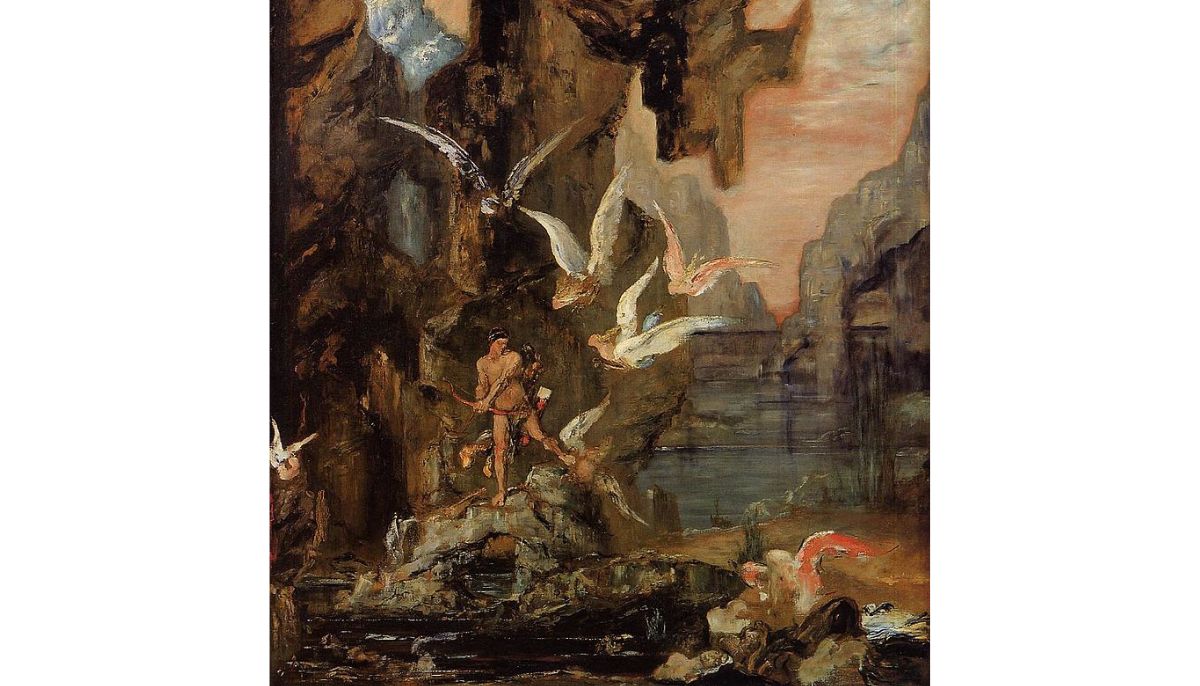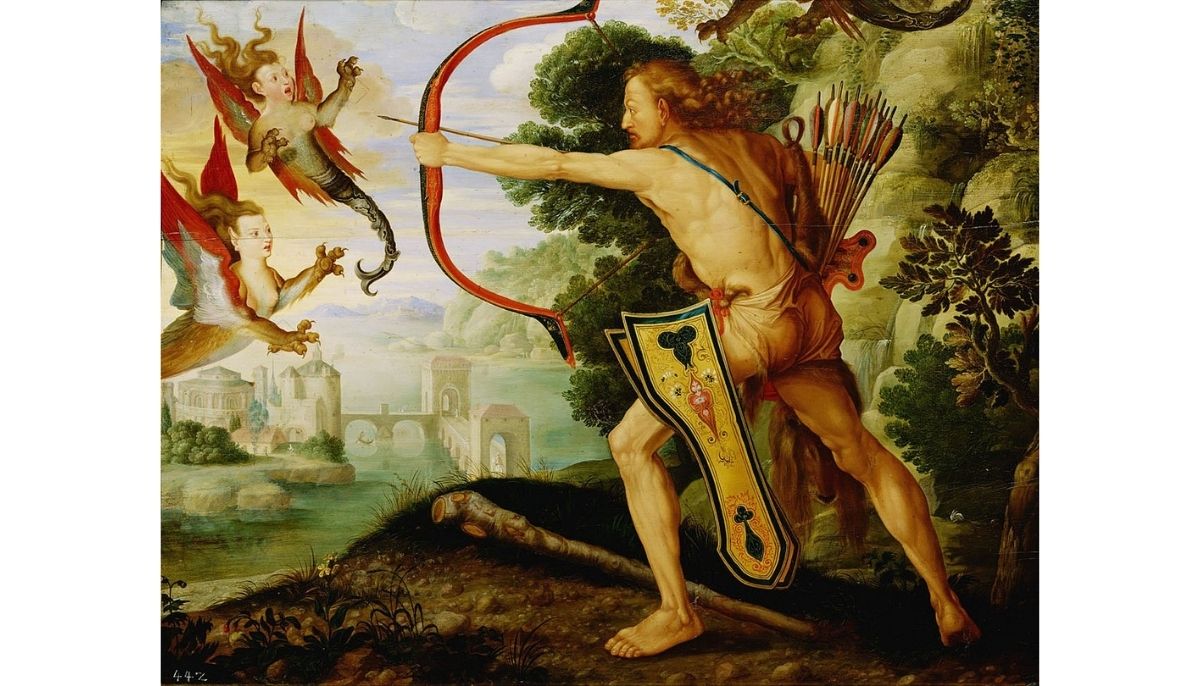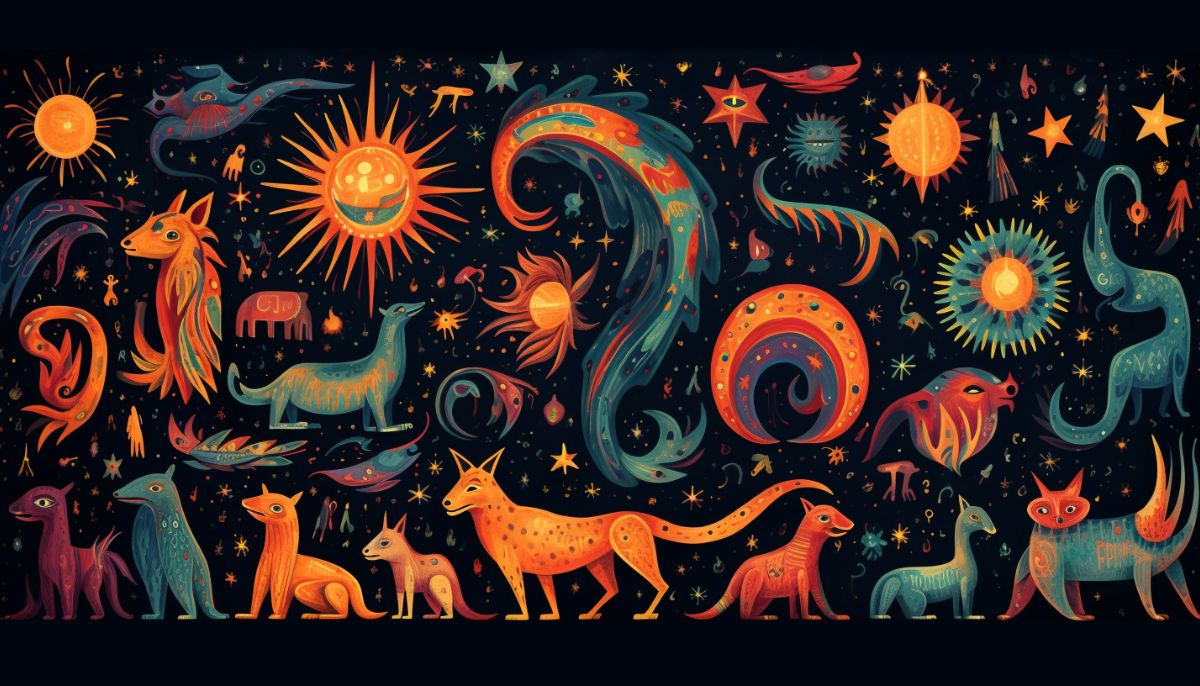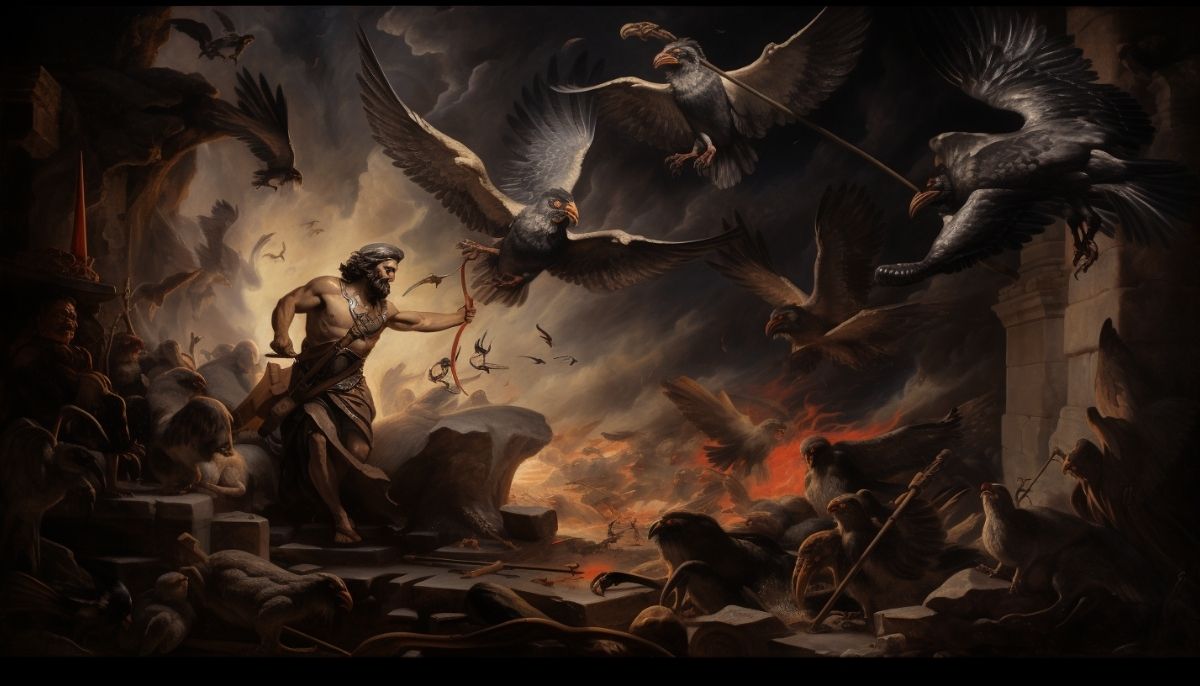In the rich tapestry of Greek mythology, the Stymphalian Birds stand as both a formidable challenge and a testament to the ingenuity of the legendary hero, Heracles.
These avian adversaries, notorious for their menacing presence around Lake Stymphalis, became the focus of Heracles’ sixth labor. Armed with Athena’s ingenious creation, the Krotala, and arrows dipped in the venom of the fearsome Hydra, Heracles faced the relentless flock.
Join us as we delve into the fascinating tale of the Stymphalian Birds, their defeat, and the enduring mark they left on Greek folklore.
What are the Stymphalian birds?
The Stymphalian Birds were a notorious flock of man-eating birds dwelling near Lake Stymphalis in Arkadia, Greece. This menacing feathered horde posed a significant challenge to Herakles, constituting the sixth of his legendary twelve labors.
Their reputation for ferocity and their knack for remaining hidden among the dense vegetation surrounding the lake made them formidable adversaries.
How big are the Stymphalian birds?
These fearsome creatures were roughly the size of cranes, resembling the ibis but with notably more powerful beaks. Their formidable beaks were capable of piercing even the toughest armor made of bronze or iron, making them exceptionally dangerous foes.
What do the Stymphalian birds represent?
In Greek mythology, the Stymphalian Birds were linked to Ares, the god of war, suggesting a connection to battle and strife. Some variations of the myth even depicted them as women, daughters of Stymphalus and Ornis, who met their end at the hands of Herakles due to their failure to extend him proper hospitality.
This intriguing duality, whether they were birds or human-like beings, added an enigmatic layer to their mythic identity.
Human-animal hybrids are a common trope in Greek Mythology. If you’re interested in learning more you can check out our articles on:
- The Centaurs of Greek Mythology
- The terrifying Harpies
- The Origins of the Minotaur
- The Sirens of the sea
Additionally, they’re associated with the Birds of Ares encountered by the Argonauts during their Black Sea expedition. This connection highlights these creatures’ pervasive influence across various Greek myths.
These details paint a vivid picture of the Stymphalian Birds – formidable, enigmatic, and deeply ingrained in the rich tapestry of Greek mythology.
Their role in the labors of Herakles and their broader presence in the mythic landscape serve as a testament to their enduring significance in ancient Greek storytelling.
Hercules and the Stymphalian birds

When faced with the formidable challenge of the Stymphalian Birds, Heracles encountered a unique predicament. The marshy terrain surrounding the nests of these avian adversaries rendered it impossible for him to approach directly.
Recognizing the hero’s predicament, Athena, the goddess of wisdom and warfare, intervened. She provided Heracles with a special tool crafted by Hephaestus, a rattle known as the Krotala.
Heracles and the Krotala
Taking to a strategic vantage point on a nearby mountain overlooking the lake, Heracles wielded the Krotala. The resounding clatter echoed far and wide, filling the air with a tumultuous cacophony. Startled and disoriented, the Stymphalian Birds took to the sky in a frenzied flight.
With the birds now in the air, Heracles seized the opportunity. He unleashed a barrage of feathered arrows, each tipped with the poisonous blood of the vanquished Hydra. This deadly combination proved devastating, as the arrows found their marks with deadly precision, felling many of the Stymphalian Birds.
Following their defeat by Heracles, the surviving Stymphalian Birds, no longer a menace to Arcadia, sought refuge on the distant island of Aretias in the Euxine Sea. Far from the lands they once plagued, they established a new home, their presence fading from the memory of the people they had once terrorized.
Divergent Interpretations: Birds or Women?

According to Mnaseas, an ancient source, an intriguing twist emerges. He posited that the Stymphalian Birds were not actual birds but women, the daughters of Stymphalus and Ornis.
In this version of the tale, their demise was attributed to their failure to extend hospitality to Heracles. This interpretation introduces a fascinating layer of complexity to the myth.
However, these beings were depicted as birds in the sacred precinct of the Stymphalian Artemis. Behind the temple, striking white marble statues portrayed maidens with avian feet, a testament to the enduring enigma surrounding the nature of these creatures.
The Stymphalian Birds and the Argonauts
However, this was not the last encounter of these monstrous birds in Greek mythology. Soon after Heracles’ triumph, the Stymphalian Birds would again make their mark, this time in the epic tale of the Argonauts.
Phineus, a seer, had warned the Argonauts of the peril they would face from the birds of Aretias. As the Argo neared the island’s shore, half of the Argonauts prepared for battle, raising their shields and spears, while the others rowed with determination.
Before making landfall, a thunderous roar echoed from the Argonauts, followed by the rhythmic pounding of spears against shields. The sound filled the air, a defiant challenge to the avian threat.
In response, thousands of Stymphalian Birds ascended into the sky. Feathers were launched towards the Argonauts, but their shields provided an impenetrable barrier, ensuring the heroes’ safety.
Symbolism and Legacy of the Stymphalian Birds
The Stymphalian Birds embody several enduring tropes in Greek mythology. They serve as a potent symbol of nature’s untamed forces, representing the primal and unpredictable aspects of the natural world. Their ability to rain down feathers like arrows and their voracious appetite for flesh evoke destruction and predation themes.
In Greek mythology, creatures akin to the Stymphalian Birds emerge, each presenting its own unique threat. The Lernaean Hydra, with its regenerating heads, and the Nemean Lion, impervious to conventional weapons, share a common thread of invulnerability, akin to the Stymphalian Birds’ imperviousness within their marshy habitat.
As Heracles’ sixth labor, the Stymphalian Birds represent a pivotal moment in his legendary odyssey. Their defeat serves as a testament to the hero’s indomitable spirit and resourcefulness in the face of formidable adversaries, leaving an indelible mark on the annals of Greek mythology.
Want to know more about the creatures and monsters of Greek Mythology?

Explore more articles like this in our broader series on Greek monsters. To delve even deeper into the world of mythical creatures, be sure to check out our comprehensive hub article on the monsters of Greek mythology.






